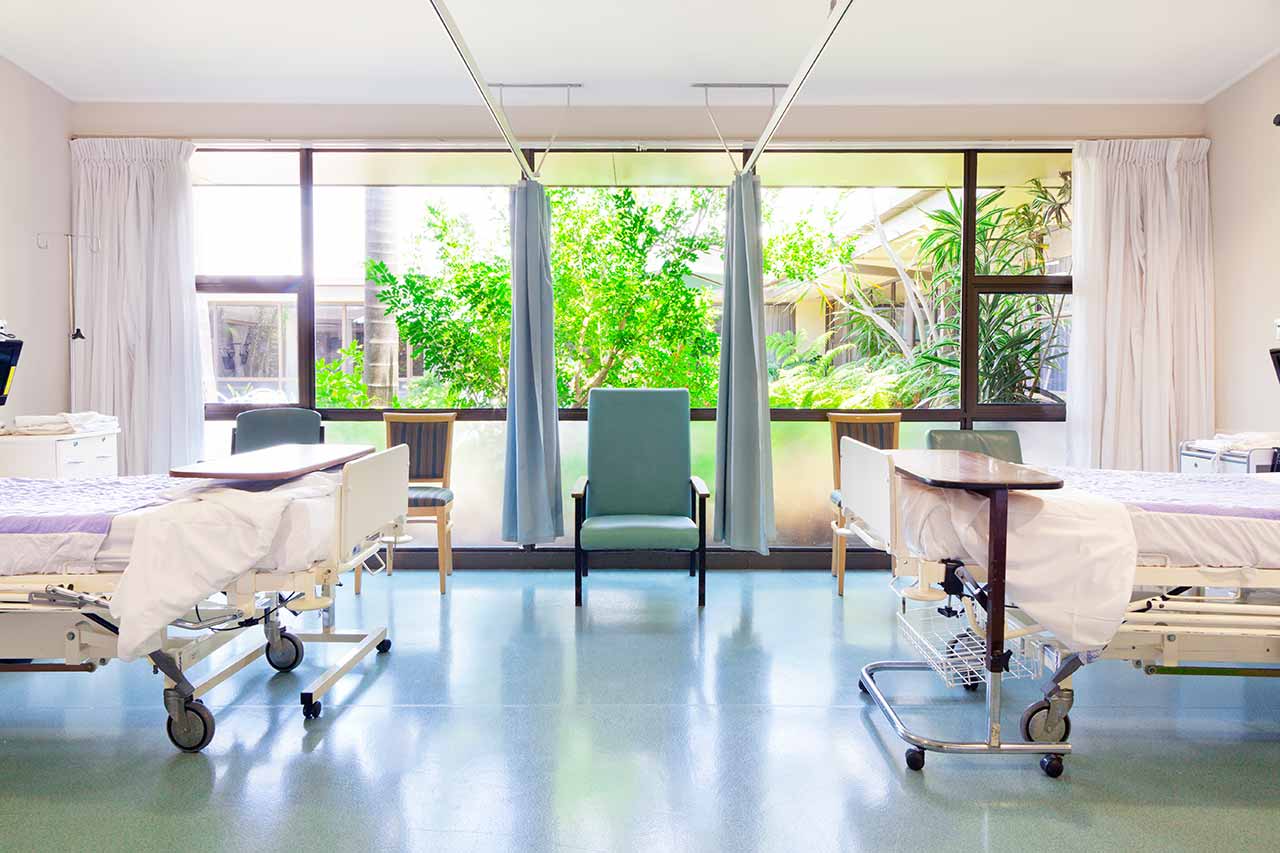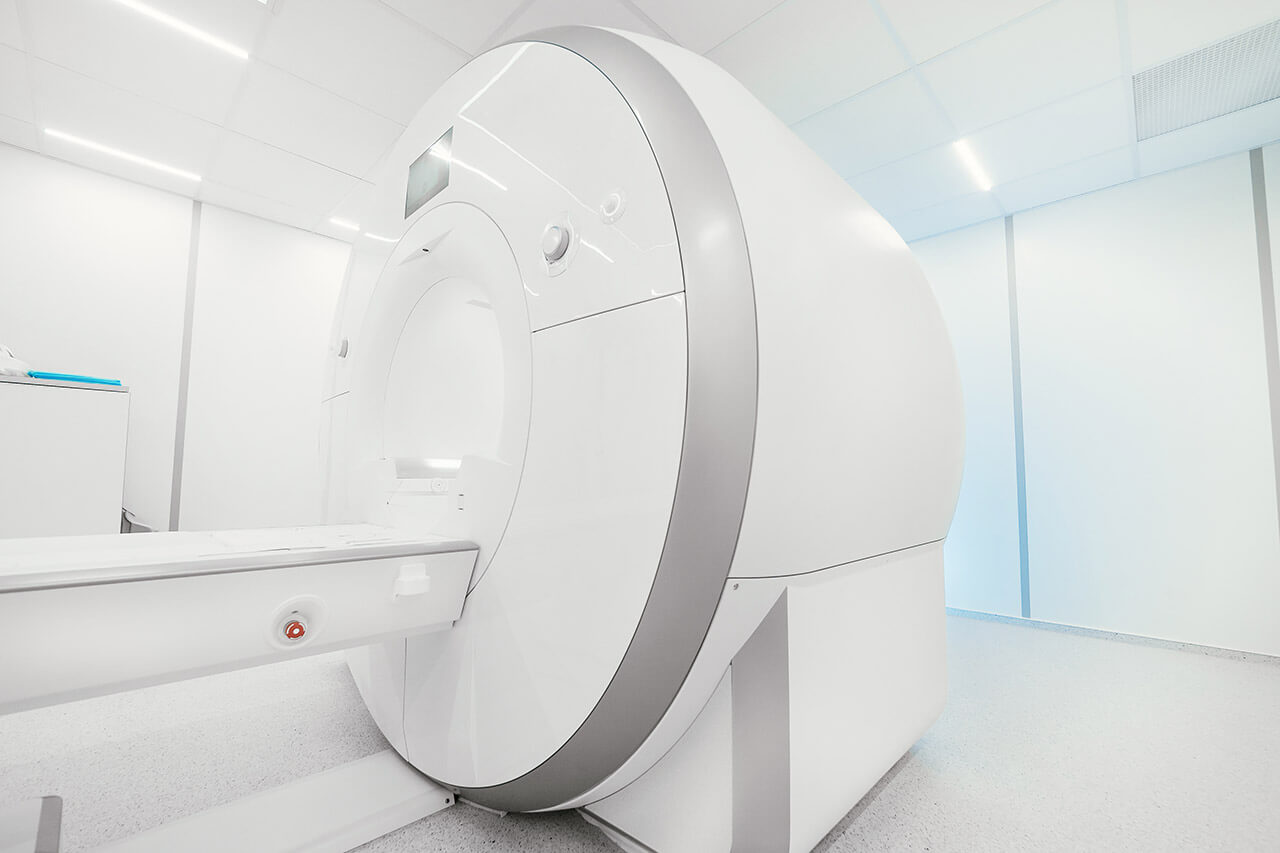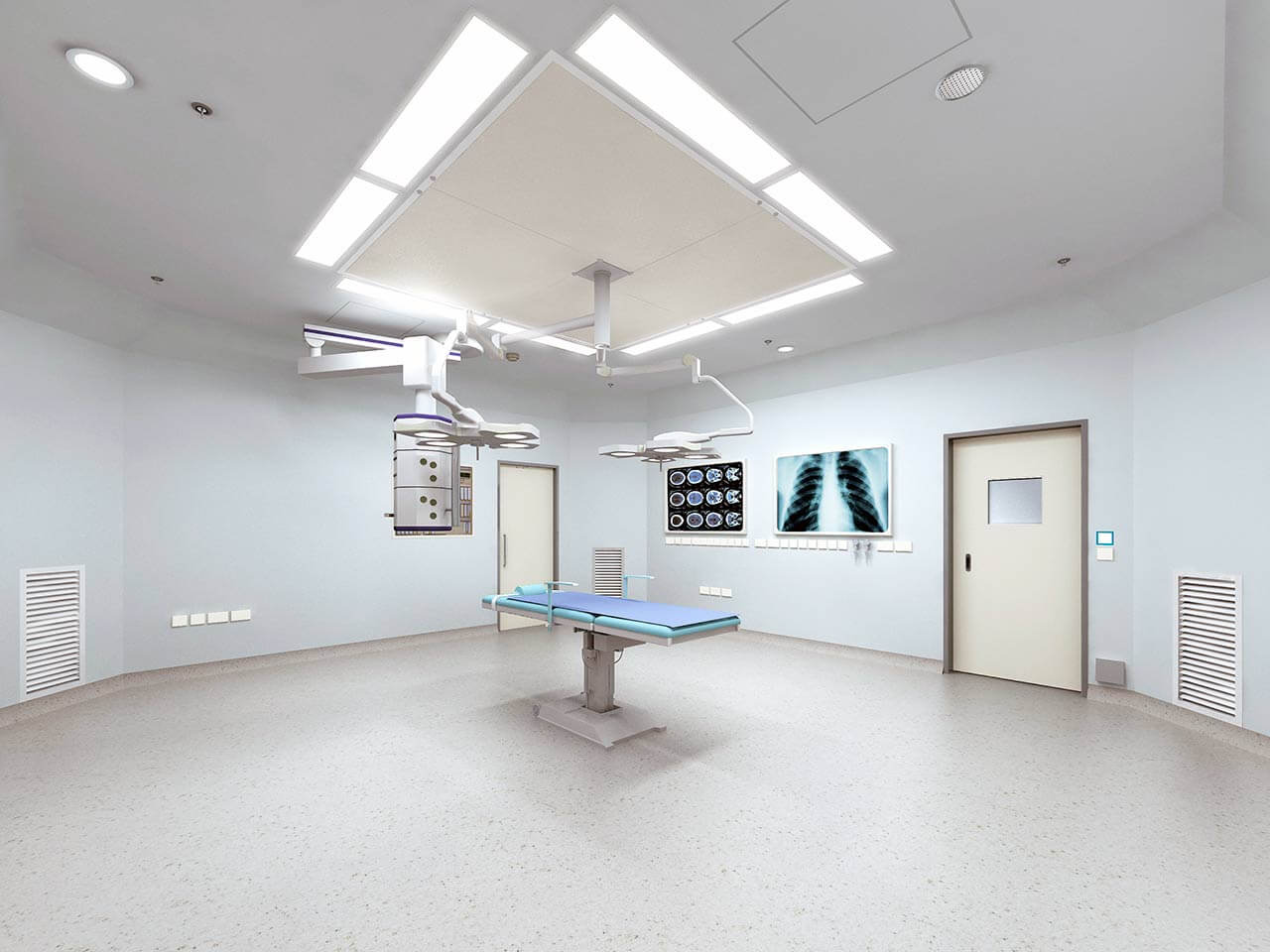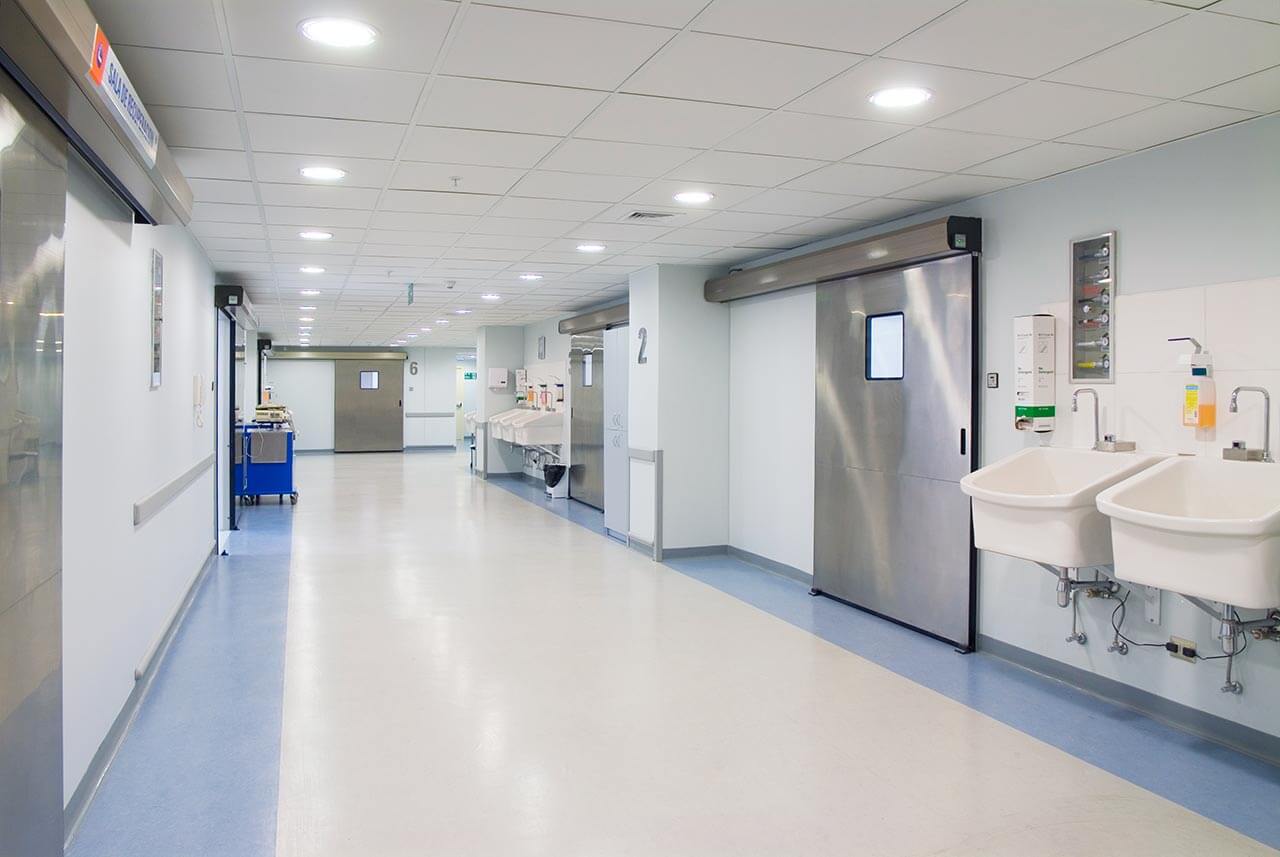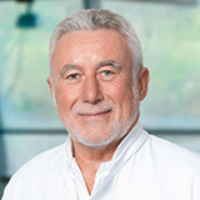
The program includes:
- Initial presentation in the clinic
- clinical history taking
- physical examination
- review of medical records
- laboratory tests:
- complete blood count
- general urine analysis
- biochemical analysis of blood
- indicators of inflammation
- indicators blood coagulation
- x-ray examination
- CT/MRI scan
- preoperative care
- hip replacement
- symptomatic treatment
- control examinations
- physiotherapeutic procedures
- orthopedic appliances
- the cost of essential medicines and materials
- nursing services
- full hospital accommodation
- explanation of future recommendations
How program is carried out
Preliminary preparation for hip replacement includes quitting smoking and drinking alcohol; cancelling non-steroidal anti-inflammatory drugs (diclofenac, ibuprofen); cancelling anticoagulants (warfarin); normalization of body mass, if possible.
Preoperative examination, including consultation with an anesthesiologist and necessary related specialists, takes 1-2 days. According to its results, the most suitable endoprosthesis is selected.
Hip replacement. The operation is performed under general anesthesia. The patient lies on his side, the affected leg is bent and fixed in this position. The surgeon makes an incision 15-20 cm long, minimally traumatizing the muscles and nerve endings. Through this incision, miniature instruments are inserted to remove the damaged joint structures. Healthy bone is adjusted for further reliable implant fixation.
The surgeon installs a femoral stem in the center of the upper part of the femur. Ball-shaped head of the joint is fixed on it. The surgeon also implants a special liner that facilitates movement of the leg and protects the structures of the prosthesis. After the primary fixation of the prosthesis components, the doctor assesses the joint range of motion, as well as the length and symmetry of the lower limb.
The implant is fixed with cement or cementless method. The doctor treats the operating field with antiseptics, conducts its final revision and sutures the wound layer by layer. A temporary drainage is installed in the joint, and a bandage is applied on top.
Postoperative care. During the first day after the intervention the patient stays in the intensive care unit, under round-the-clock medical supervision. After that, with a smooth course of the postoperative period, the patient is transferred to a regular ward and the drains are removed. The range of motion expands gradually, from light toes movements to walking. Walking with the use of walking aids is allowed in 3-5 days after the operation.
Required documents
- Medical records
- X-ray examination, MRI/CT scan (if available)
Service
You may also book:
 BookingHealth Price from:
BookingHealth Price from:
About the department
The Department of Adult and Pediatric Trauma Surgery, Orthopedic Surgery, Foot Surgery at the Eichsfeld Hospital Heilbad Heiligenstadt provides high-quality diagnostics and effective treatment of injuries and pathologies of the bones, joints, tendons and muscles. The department's doctors offer patient-centered medical care, therefore, comprehensive diagnostics and an individual approach to the clinical case are of particular value. The department admits patients of all ages – from adults and the elderly to young children and adolescents. The department has the status of a regional Trauma Center and is part of the Trauma Network Goettingen-Kassel. In addition, the medical facility operates a modern Joint Replacement Center awarded with the prestigious endoCert certificate. The specialists of the center perform over 350 knee and hip replacement surgeries every year with top-class results. The surgical treatment of orthopedic diseases and musculoskeletal injuries is mostly carried out using modern minimally invasive techniques, which contribute to the rapid recovery of mobility after the intervention and minimal pain. Many minor surgical procedures are performed on an outpatient basis, so the patient can leave the department within a few hours after the intervention. The Head Physician of the department is Dr. med. Dietmar Litzkow.
The patients with musculoskeletal injuries, including polytrauma, are admitted to the department around the clock. First of all, the department's specialists carry out a clinical examination, X-ray scanning and other necessary diagnostic tests, after which they decide on the next therapeutic steps – conservative or surgical treatment. A surgical intervention is the last-line therapy, therefore, in most cases, specialists strive to carry out treatment without surgical techniques. However, in complex injuries, surgery is often unavoidable. The advantage for the patient is that the medical facility actively uses sparing arthroscopic techniques and closed osteosynthesis procedures. Modern surgical techniques make it possible to treat complex traumatic injuries without extensive incisions in the skin and soft tissues, which in turn contributes to mild pain syndrome and rapid recovery. The department's trauma surgeons successfully cope with the treatment of bone fractures of the shoulder, forearm, elbow, hip, foot, spine, as well as with the treatment of ligament and tendon tears, dislocations, etc. The specialists also provide medical care for young patients. In this case, pediatricians are necessarily involved in the therapeutic process, since it is important for the doctors not only to eliminate the injury, but also to ensure the normal further development of the musculoskeletal system in the child.
Special attention in orthopedic surgery is paid to joint replacement surgery performed in a specialized Endoprosthetics Center with endoCert certification of the German Society for Orthopedics and Orthopedic Surgery (DGOOC). The certification guarantees the patient a personalized service, adherence to modern hygiene and safety standards, and high treatment efficiency rates. The department's surgeons annually perform more than 350 operations for partial and total knee and hip replacement. The department's doctors always take into account the individual needs of the patient, which ensures a high-quality treatment result. Each operation is preceded by thorough preparation with the development of a regimen for the upcoming treatment. Particular attention is paid to the choice of an endoprosthesis, since this is one of the key components of the successful surgery outcome. The department's specialists use both standard endoprostheses from leading manufacturers on the international market and custom-made endoprostheses. In most cases, joint replacement surgery is performed using minimally invasive techniques – without extensive skin incisions and soft tissue lesions. The specialists use advanced navigation systems for the most accurate positioning of the artificial joint, if required. The team of the department's doctors also performs revision (repeated) interventions to replace previously implanted prostheses. After joint replacement surgery, the patient receives proper care and qualified assistance from experienced physiotherapists.
The department's orthopedic surgeons also specialize in arthroscopic interventions for shoulder dislocations, rotator cuff tears, meniscus and cruciate ligament tears, vertebral fractures, etc. Many arthroscopic procedures are performed on an outpatient basis.
Another important focus of the department's medical team is on care for patients with foot injuries and pathologies, including those with congenital defects. The department successfully performs surgical interventions to repair hallux valgus, Tailor's bunion, hammer and claw toes, surgical repair of foot deformities, as well as provides flat feet treatment. Whenever possible, sparing minimally invasive surgical techniques are used.
The department's range of medical services includes:
- Trauma surgery
- Conservative and surgical treatment of bone fractures of the shoulder, forearm, elbow, hip, foot, spine, as well as ligament and tendon tears, dislocations, polytrauma in adults and children
- Conservative and surgical treatment of sports injuries: traumatic lesions of the muscles, tendons and ligaments
- Orthopedic surgery
- Knee, hip, shoulder and elbow partial and total replacement surgery, including revision surgery to replace previously implanted prostheses (for example, due to displacement of parts of the prosthesis, inflammatory processes)
- Arthroscopic interventions on the knee, shoulder and ankle joints, including cartilage transplantation
- Corrective surgery for axial deformities of the lower extremities and leg length difference
- Knee surgery for fractures and their complications, meniscus and ligament tears, patellar dislocation, cartilage degeneration
- Shoulder surgery for compression syndromes, rotator cuff tear, shoulder labral tear, tendon rupture
- Surgery for vertebral fractures: kyphoplasty and dorsal stabilization
- Osteomyelitis surgery
- Foot surgery
- Hallux valgus surgery
- Tailor's bunion surgery
- Hammer and claw toe surgery
- Flat foot surgery
- Other therapeutic options
Curriculum vitae
Dr. med. Dietmar Litzkow is the Head of the Department of Adult and Pediatric Trauma Surgery, Orthopedic Surgery, Foot Surgery at the Eichsfeld Hospital Heilbad Heiligenstadt. From 1993 to 2007, he was the Head Physician of the Department of Orthopedics and Traumatology at the Hufeland Hospital Mühlhausen. In 2007, the specialist opened a private practice in Leinefelde-Worbis. In 2015, the Joint Replacement Center was founded at the Eichsfeld Hospital Heilbad Heiligenstadt, where the specialist was the Head Surgeon. In March 2018, he also held the position of the Head of the Joint Replacement Center.
Photo of the doctor: (c) Eichsfeld Klinikum
About hospital
The Eichsfeld Hospital Heilbad Heiligenstadt is a reputable medical facility, whose patients can undergo high-quality diagnostics and treatment in accordance with European standards. The medical facility is an Academic Hospital of the University of Goettingen, so many local doctors are actively engaged in research activities and can offer patients innovative treatment methods that are available only in leading medical centers in Germany.
The hospital has ten highly specialized departments, which are responsible for the diagnostics and treatment of a specific group of diseases. The hospital provides modern treatment of diseases of the heart, gastrointestinal tract, musculoskeletal system, female and male reproductive system, as well as diseases in children. The hospital has 352 beds. Patients also receive many medical services on an outpatient basis.
The hospital employs a highly professional team of doctors, each of whom strives to provide the patients with effective, most sparing and safe treatment in a comfortable environment. The specialists are distinguished not only by their successful clinical experience, but also by their approach to treatment – the patient and his health always come first. The doctors and nursing staff are sympathetic to the individual needs and wishes of their patients. The specialists are always ready to help, advise and answer questions of interest.
The hospital is justly proud of its modern technical base. The medical facility has diagnostic rooms with state-of-the-art equipment for laboratory and endoscopic examinations, operating rooms with everything necessary to perform minimally invasive and open surgeries, treatment rooms with advanced laser systems, etc. All this allows for high-precision diagnostics and treatment in accordance with the very latest standards of world medicine.
The exceptional quality of the hospital's medical services is confirmed by the prestigious Cooperation for Transparency and Quality in Healthcare (KTQ) certificate. In addition, an undeniable evidence of the high status of the hospital is the constantly growing number of patients who entrust their health to its doctors.
Photo: (с) depositphotos
Accommodation in hospital
Patients rooms
The patients of the Eichsfeld Hospital Heilbad Heiligenstadt live in comfortable single and double rooms with a modern design. Each patient room has an ensuite bathroom with shower and toilet. The furnishing of the patient rooms includes an automatically adjustable bed, a bedside table, a wardrobe, a TV and a telephone. The patient can connect to Wi-Fi, if desired.
The hospital also offers accommodation in enhanced-comfort rooms. Such patient rooms are more spacious, additionally equipped with upholstered furniture, a safe and a mini fridge. The bathroom of the enhanced comfort rooms has changeable towels and toiletries.
Meals and Menus
The hospital provides its patients with three delicious and healthy meals a day: breakfast, lunch and dinner. Diet meals are provided for each meal. If for some reason you do not eat all the foods, you will be offered an individual menu.
Those patients living in enhanced-comfort rooms are offered a wider range of meals. Fresh fruit is delivered to the room every morning, as well as tea and coffee can be ordered throughout the day.
In addition, the hospital has a cozy cafeteria where one can taste delicious European cuisine, enjoy a cup of tea, coffee or cappuccino with a wonderful dessert.
Further details
Standard rooms include:
Television
During an inpatient stay, each patient can use a telephone, a TV and the Internet. Please inform the medical staff about your desire to use these services at the time of admission to the hospital. The base rate is 1.60 € per day and includes the use of the TV in the patient room.
The Internet is available in almost all patient rooms of the hospital. Reservations are made upon admission to inpatient treatment or in the information department. Access is provided with a password for a fee of 3 € for every 300 MB.
Religion
The hospital regularly hosts Catholic divine services. Other religious services are available upon request.
Accompanying person
Your accompanying person may stay with you in your patient room or at the hotel of your choice during the inpatient program.
Hotel
You may stay at the hotel of your choice during the outpatient program. Our managers will support you for selecting the best option.
